
Hiking trail
The abbey’s surroundings are not only very beautiful, they also look different in every season. If you love getting out into nature, you should definitely come here for a walk, alone or with family and friends. Click on the map at the bottom and discover the story of Westmalle.
Café Trappisten
There’s no better place to start your walk than at Café Trappisten! These days, you can enjoy a freshly poured Trappist beer or a tasty dish at the café, but things used to be different.
Long ago, the Huis ten Halve grocery shop stood here, exactly halfway between Antwerp and Turnhout. In 1841, the property came under the ownership of the abbey and then, in 1923, it became a café. The owners paid the monks a sum of money by way of rent, as well as two carts of manure and a bottle of gin. After a thorough renovation, the cosy Café Trappisten as we know it today opened in 2008.
>> Now cross the Antwerpsesteenweg – carefully! – via the zebra crossing. Go down the lane leading to the abbey. After a while you will see St Bernard’s chapel on your left, a little way down the lane.

St Bernard’s chapel
During World War II, two British bombers crashed near the abbey. The sad toll was 13 dead.
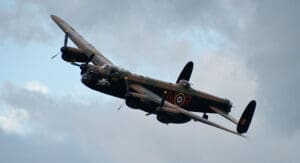
In memory of the fallen airmen and out of gratitude that the abbey had been spared, the fathers erected St Bernard’s chapel in 1947. Note the stained-glass windows by Victor Van Mil, a Dutch Trappist. The windows show the coats of arms of Belgium, the Royal Air Force and Abbot Robertus Eyckmans.
>> When you come to an intersection of two avenues, you will see an information board on the left. Turn right into the lane that runs parallel to the water in front of the long abbey wall.
Back to 1 Continue to 3Abbey
The story of the abbey began in 1794, when 10 French Cistercians settled in the ‘Nooit Rust’ farmstead in Malle. They quickly got to work and over the years they turned the moors and bogs into fertile farmland. They also expanded the abbey to include a church and guesthouse, a brewery, printing works and a pharmacy.
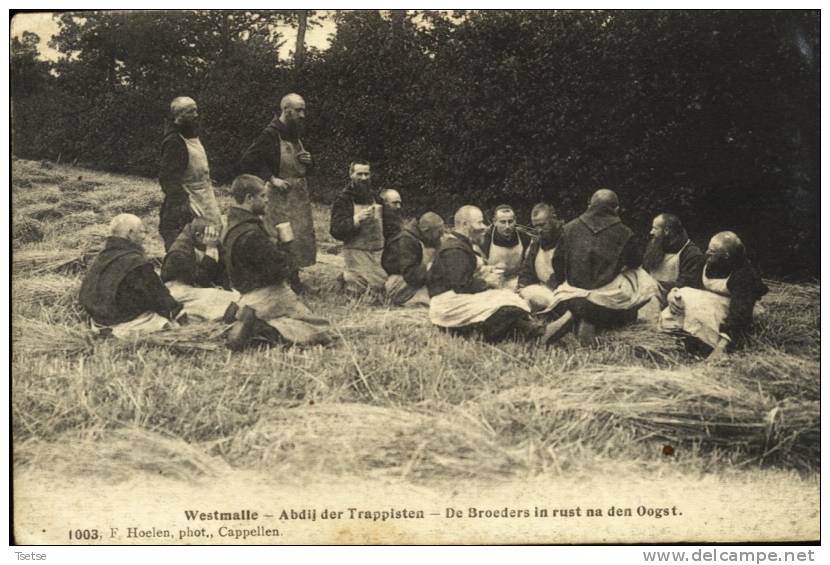
The abbey library has more than 50,000 books.
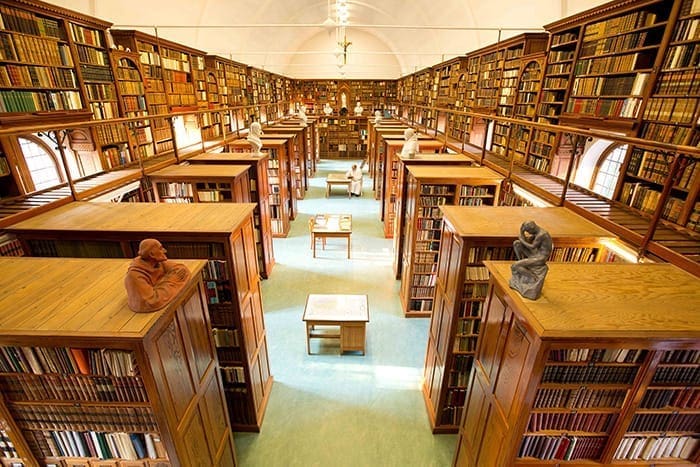
The extensive surroundings of the abbey have been recognised as a heritage landscape.
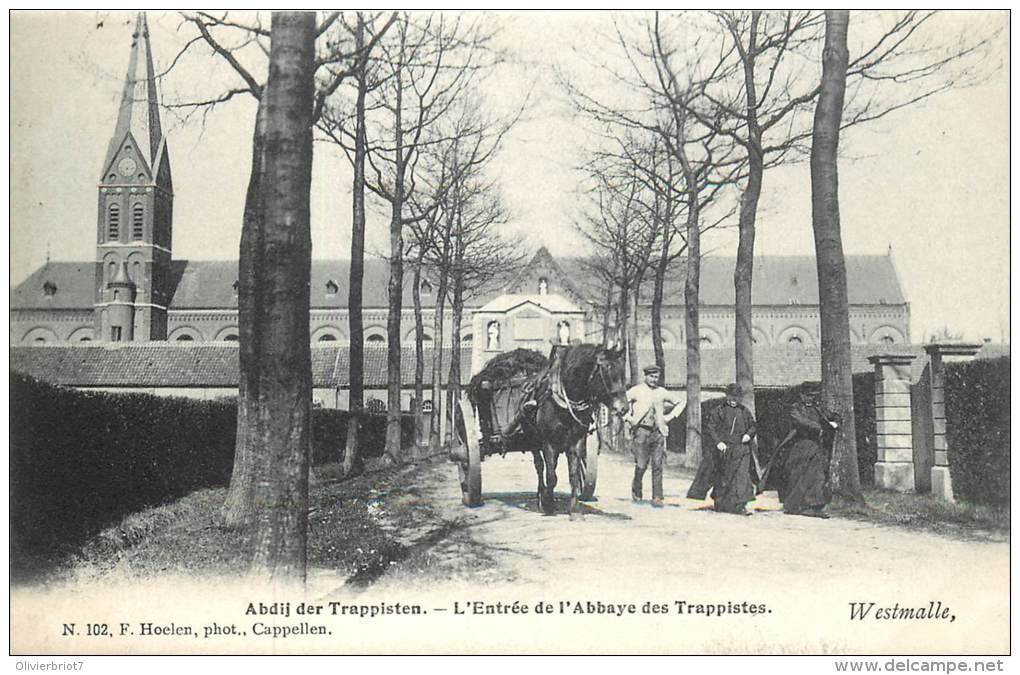
Novitiate
Where you reach some stained-glass windows in the abbey wall, you have reached the novitiate. This is where aspiring monks, known as ‘novices’, receive their two years of training which prepares them for Cistercian life.
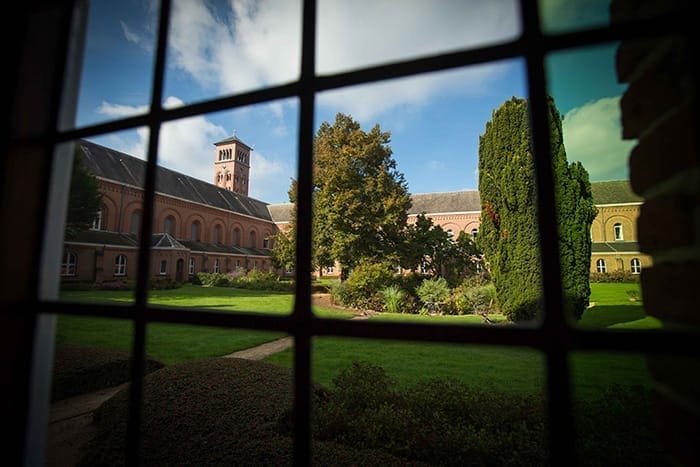
After two years, novices take their temporary vows. Another three years later, they can ask the abbot if they can take their solemn vows. In doing so, they commit themselves to the abbey community for the rest of their lives.
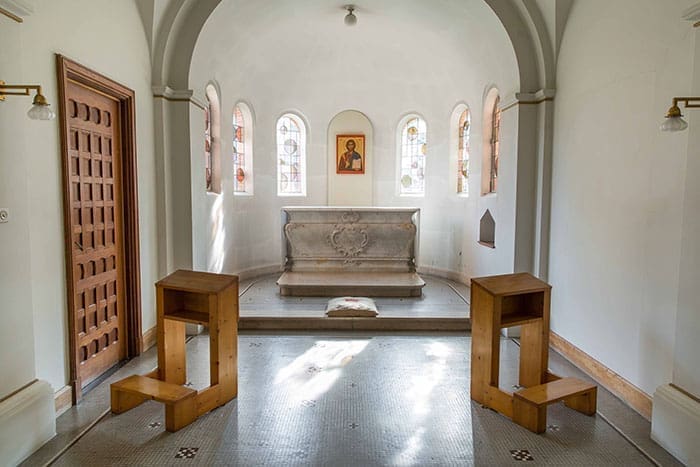
Brewery: history
According to the rules of the order, Trappists were allowed to drink the popular drink of the region they resided in. In a beer country par excellence, it is no surprise that the monks started a brewery. Originally, beer was brewed only for the monks’ own consumption. After a while, beer was also sold to help pay the abbey’s way. In 1934, the monks built a completely new, modern brewery, which has been automated over the years.
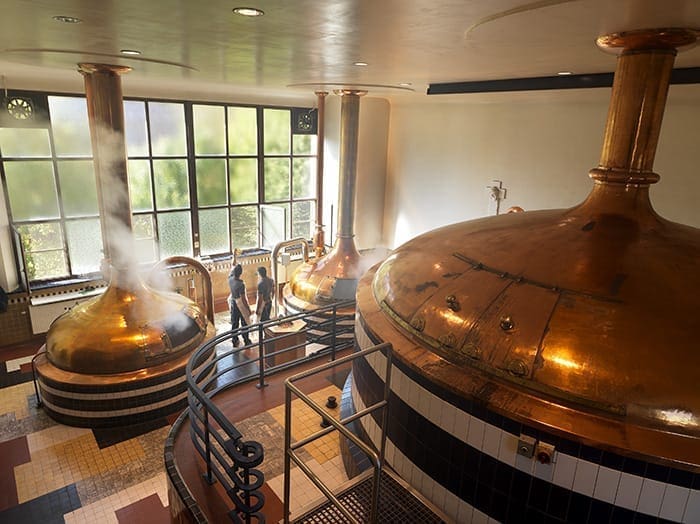

Brewery: Trappist beer
Westmalle brews three Trappist beers: Extra (4.8%), Dubbel (7%) and Tripel (9.5%). Westmalle Extra is the beer that the monks drink themselves at mealtimes. The name Westmalle Dubbel stems from the fact that it is brewed with double the ingredients of a former beer variant, with the Tripel being made with three times the ingredients.

Genuine Trappist beer carries the ‘Authentic Trappist Product’ label. Among other things, this label guarantees that the beer is brewed by the monks themselves – or at least under their supervision – in a Trappist abbey. Brewing is a secondary concern to the regular duties of the monks and a significant portion of the proceeds go to charity.

>>
Walk on to the junction of the unmade road with an asphalt surfaced road. There, turn left. From here you have a lovely view of the entire abbey complex.
Back to 5 Continue to 7Brewery: maturation and storage
Underneath the collection area for empty beer tanks there is a large cellar where the beer ferments in bottles for three weeks at a constant temperature of 20°C. This re-fermentation gives the beer its full flavour and alcohol content.
Useful information: Westmalle beer is best stored in the dark at a temperature of 9 to 14°C. Place the bottles upright. This keeps the yeast at the bottom and enables you to pour a nice, clear beer. Leave about 1 cm in the bottle: that yeast bottom is nice to taste separately.
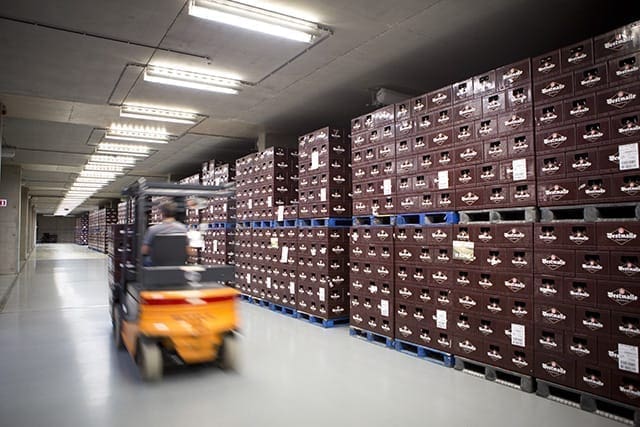
Farm: cows
Within the abbey walls there is also a farm which focuses on dairy cattle and crops to feed the animals. From spring to autumn, you can see cows grazing in the meadows around the abbey. The monks maintain vegetarian diets and keep these animals solely for their milk, with which they make delicious Trappist cheese.


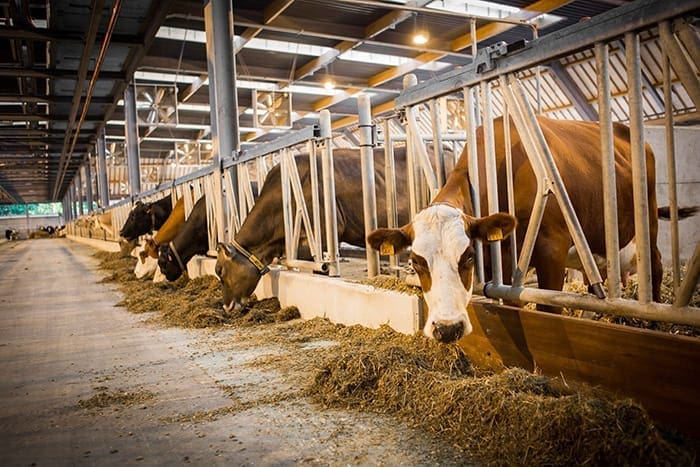
Farm: Trappist cheese
We make our Trappist cheese using the delicious milk from our own cows. This is done using traditional methods and without any colouring or preservatives.

The semi-hard Westmalle cheese has a very low salt content: less than 1%. There are three varieties: the 2+, 6+ and 12+ cheeses have been matured for two, six and twelve months respectively.
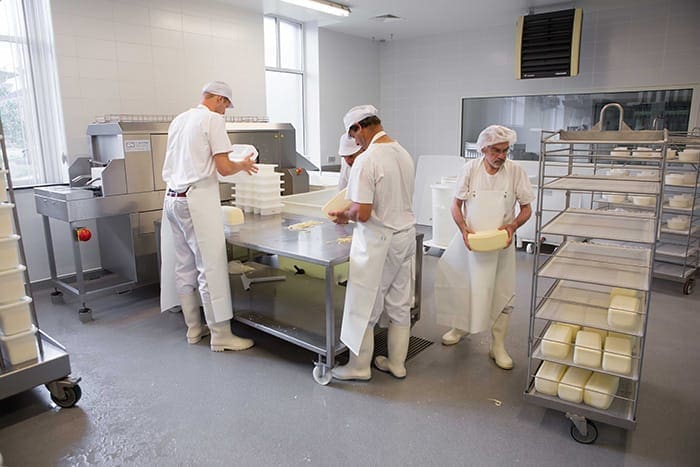
Fancy discovering our cheese? You can buy it at Café Trappisten or at the abbey gate (open every day except Sundays and public holidays). You can find sales outlets near you here.

>> Walk on to the end of the long abbey wall. On the right, you will see two large meadows surrounded by a fence. With luck, you will see a large number of sheep in the meadows. At the end of the wall, turn left into the lane.
Back to 8 Continue to 10Church tower
The church tower originally had a pointed tip. At the beginning of World War I, it was blown up by the Belgian army so that it could not be used as an enemy vantage point.

After that, a simple gabled roof appeared for a time.
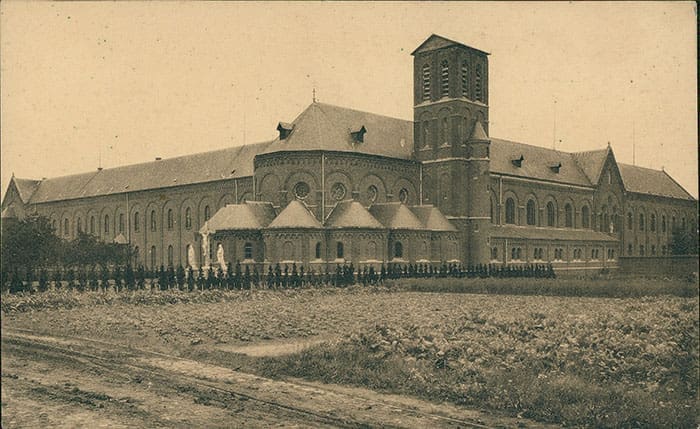
After the war, the tower was resurrected as an Italianate campanile tower. The idea probably came from abbot Dom Herman-Jozef Smets. He regularly visited Rome, having been appointed Abbot General of the Trappist order.
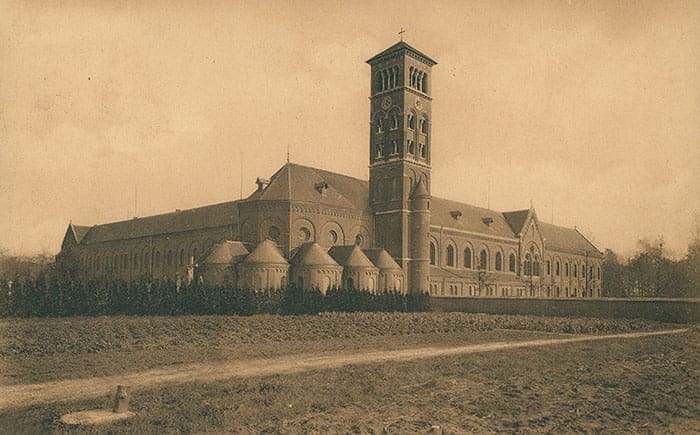
Abbey: life as a monk
Above the entrance gate to the abbey is a Latin text. Freely translated, it means: “Whoever does not do penance will die. Everyone in the same way.”
Life inside the abbey walls follows a set pattern. The monks pray and chant together six times a day in church. In between, they study and meditate, do odd jobs and work in the cheese dairy or bakery. This is because they live by the Rule of St Benedict, which means they have to roll up their sleeves and provide for themselves.

You cannot visit the abbey, but the guesthouse is open to visitors seeking peace and reflection. You are also welcome to attend the prayer services and the Eucharist.

>> Feel free to pop into our abbey shop. You can buy our cheese there, as well as other Trappist products and a selection of books and religious articles.
Discover more
Sit in Café Trappisten and watch the film about the brewery, free of charge, while you enjoy sampling Westmalle cheese and beer.
Experience more in Malle or in the Campine region.
>> Continue along the block path towards Café Trappisten, where you can sit and quietly relax.
Back to 10 Continue to 12